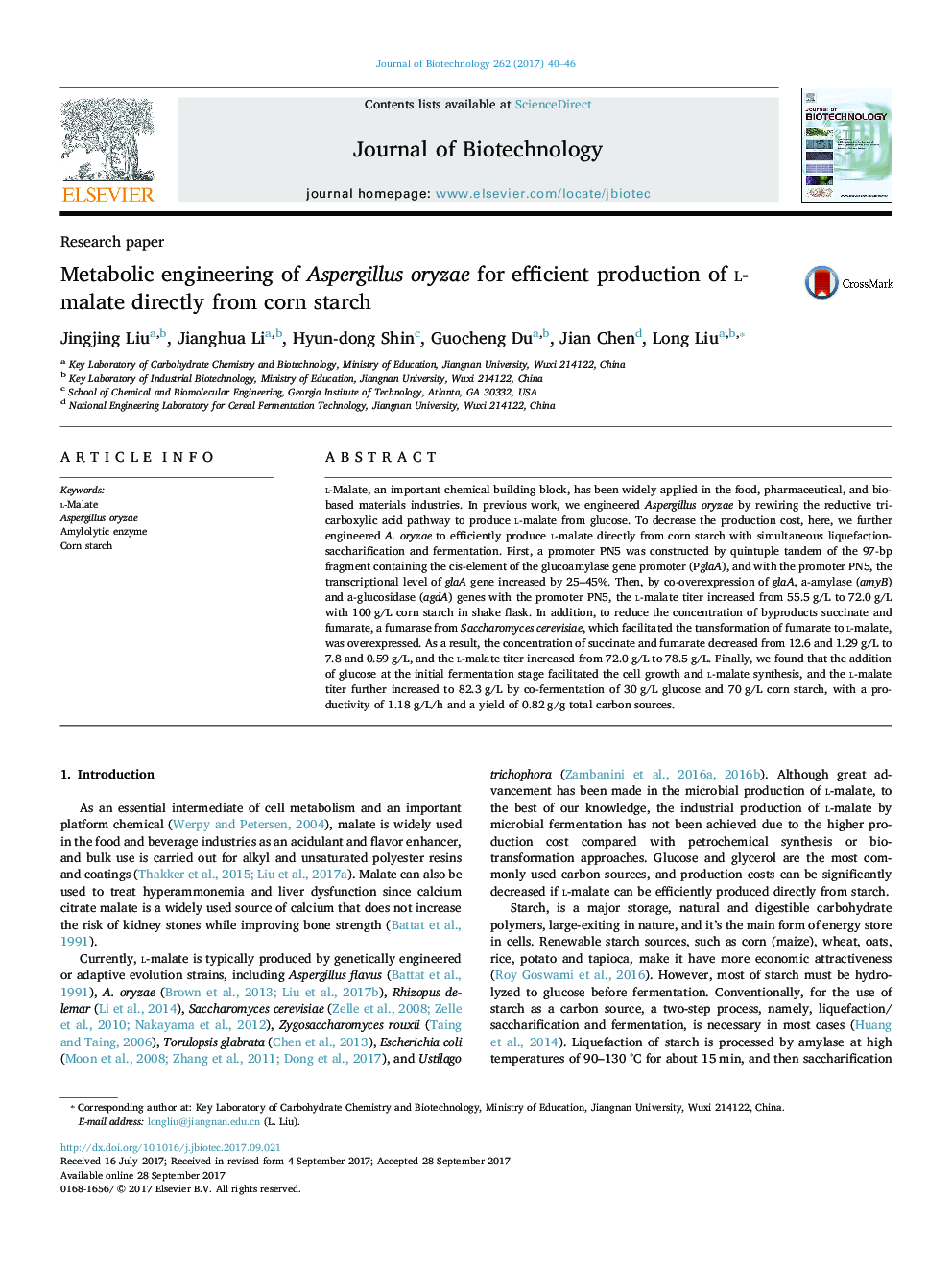| کد مقاله | کد نشریه | سال انتشار | مقاله انگلیسی | نسخه تمام متن |
|---|---|---|---|---|
| 4753497 | 1416981 | 2017 | 7 صفحه PDF | دانلود رایگان |

- A promoter PN5 was constructed by quintuple tandem of the 97-bp fragment containing the cis-element of the glucoamylase gene promoter (PglaA).
- Overexpression of three amylolytic enzymes, namely, α-amylase, α-glucosidase, and glucoamylase.
- Overexpression of fumarase gene from Saccharomyces cerevisiae to reduce the concentration of byproducts succinate and fumarate.
- Co-fermentation of glucose and corn starch to further increase the l-malate synthesis.
l-Malate, an important chemical building block, has been widely applied in the food, pharmaceutical, and bio-based materials industries. In previous work, we engineered Aspergillus oryzae by rewiring the reductive tricarboxylic acid pathway to produce l-malate from glucose. To decrease the production cost, here, we further engineered A. oryzae to efficiently produce l-malate directly from corn starch with simultaneous liquefaction-saccharification and fermentation. First, a promoter PN5 was constructed by quintuple tandem of the 97-bp fragment containing the cis-element of the glucoamylase gene promoter (PglaA), and with the promoter PN5, the transcriptional level of glaA gene increased by 25-45%. Then, by co-overexpression of glaA, a-amylase (amyB) and a-glucosidase (agdA) genes with the promoter PN5, the l-malate titer increased from 55.5Â g/L to 72.0Â g/L with 100Â g/L corn starch in shake flask. In addition, to reduce the concentration of byproducts succinate and fumarate, a fumarase from Saccharomyces cerevisiae, which facilitated the transformation of fumarate to l-malate, was overexpressed. As a result, the concentration of succinate and fumarate decreased from 12.6 and 1.29Â g/L to 7.8 and 0.59Â g/L, and the l-malate titer increased from 72.0Â g/L to 78.5Â g/L. Finally, we found that the addition of glucose at the initial fermentation stage facilitated the cell growth and l-malate synthesis, and the l-malate titer further increased to 82.3Â g/L by co-fermentation of 30Â g/L glucose and 70Â g/L corn starch, with a productivity of 1.18Â g/L/h and a yield of 0.82Â g/g total carbon sources.
Journal: Journal of Biotechnology - Volume 262, 20 November 2017, Pages 40-46